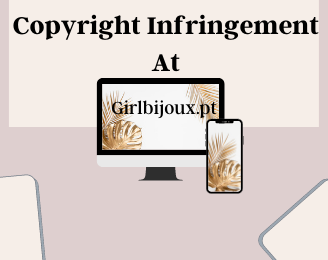In the vast digital landscape of the internet, bloggers stand as creators, crafting content that engages, informs, and entertains audiences worldwide. Every word written, every image curated, and every idea shared represents an investment of time, effort, and creativity. However, with the proliferation of online content, the risk of plagiarism looms large, posing a threat to the integrity and ownership of your work. As a blogger, safeguarding your content against plagiarism is essential to preserve your intellectual property rights and maintain the authenticity of your voice.
Here are some invaluable tips to help you protect your content from plagiarism:
- Understand Copyright Basics :- Before delving into strategies for protecting your content, it’s crucial to have a solid understanding of copyright law. Copyright grants you exclusive rights to your original creations, including blog posts, articles, photographs, and videos, giving you the authority to control how your work is used, reproduced, and distributed. Familiarize yourself with the duration of copyright protection, fair use guidelines, and the process of copyright registration to empower yourself as a content creator.
- Create Unique and Original Content :- The foundation of protecting your content from plagiarism begins with creating unique and original work. Develop your distinct voice, style, and perspective to set your blog apart from others in your niche. Conduct thorough research to ensure that your ideas and insights are original, avoiding the temptation to replicate or paraphrase content from other sources. By prioritizing authenticity and creativity, you establish a strong defense against plagiarism accusations and establish yourself as a reputable authority in your field.
- Use Plagiarism Detection Tools :- In the digital age, technology offers invaluable resources to help you identify instances of plagiarism and unauthorized use of your content. Utilize plagiarism detection tools such as Copyscape, Grammarly, and Turnitin to scan your blog posts and detect any duplicated or copied content across the web. Regularly running these checks can alert you to potential instances of plagiarism, allowing you to take prompt action to address the issue and protect your intellectual property rights.


- Implement Copyright Notices and Watermarks :- Incorporating copyright notices and watermarks into your blog content serves as a visible deterrent against plagiarism and unauthorized usage. Place copyright notices at the bottom of your blog posts, asserting your ownership of the content and specifying the terms of use for readers. Additionally, consider watermarking your images and graphics with your blog’s logo or branding elements to prevent them from being misappropriated or used without permission.

Monitor and Enforce Your Rights :- Vigilance is key when it comes to protecting your content from plagiarism. Regularly monitor your blog posts, social media platforms, and other online channels for any instances of unauthorized use or duplication. If you discover that your content has been plagiarized, take swift action to enforce your rights.
Send a cease-and-desist letter to the infringing party, demanding the removal of the plagiarized content and seeking compensation for damages incurred. In cases of severe infringement, consider seeking legal counsel to pursue legal remedies and uphold your rights as a content creator.
- Engage with a Creative Commons License :- Consider licensing your blog content under a Creative Commons license to clearly communicate the permissions and restrictions associated with your work. Creative Commons offers a range of licenses that allow you to specify how others can use, share, and modify your content while retaining certain rights. By choosing a Creative Commons license that aligns with your preferences, you can facilitate the legal and ethical sharing of your content while still maintaining control over its use and distribution.
- Educate Your Audience about Copyright :- As a blogger, you have a unique opportunity to educate your audience about the importance of copyright protection and the ethical considerations surrounding content usage. Include a dedicated page on your blog outlining your copyright policy, fair use guidelines, and proper attribution practices. Encourage your readers to respect intellectual property rights and seek permission before reposting or repurposing your content. By fostering a culture of respect for copyright, you contribute to a more responsible and ethical online community.

- Stay Informed and Adapt :- The landscape of online publishing and intellectual property is constantly evolving, with new challenges and opportunities emerging regularly. Stay informed about the latest developments in copyright law, digital rights management, and content protection strategies to adapt your approach accordingly.
Remain proactive in implementing new tools and techniques to safeguard your content from plagiarism and ensure that your rights as a content creator are upheld in an ever-changing digital environment.
In conclusion, as a blogger, your content is your intellectual property, representing the culmination of your creativity, expertise, and passion. Protecting your content from plagiarism is not only essential for preserving your rights as a creator but also for maintaining the integrity and credibility of your blog. By following these tips and adopting proactive measures to safeguard your content, you can mitigate the risks of plagiarism and empower yourself as a responsible and respected member of the online community. Remember, your words have power, and it’s up to you to ensure that they are shared and respected ethically and legally.






 Mon-Sat 10am-7pm IST
Mon-Sat 10am-7pm IST